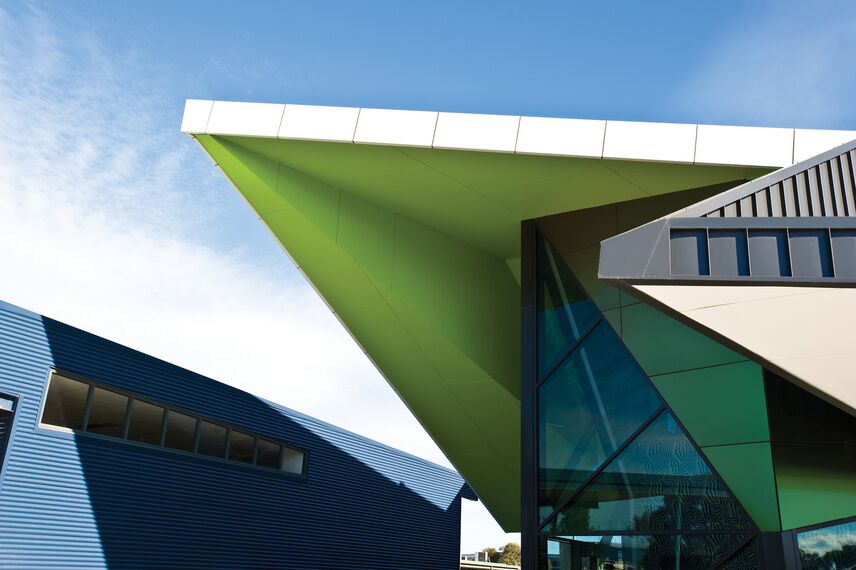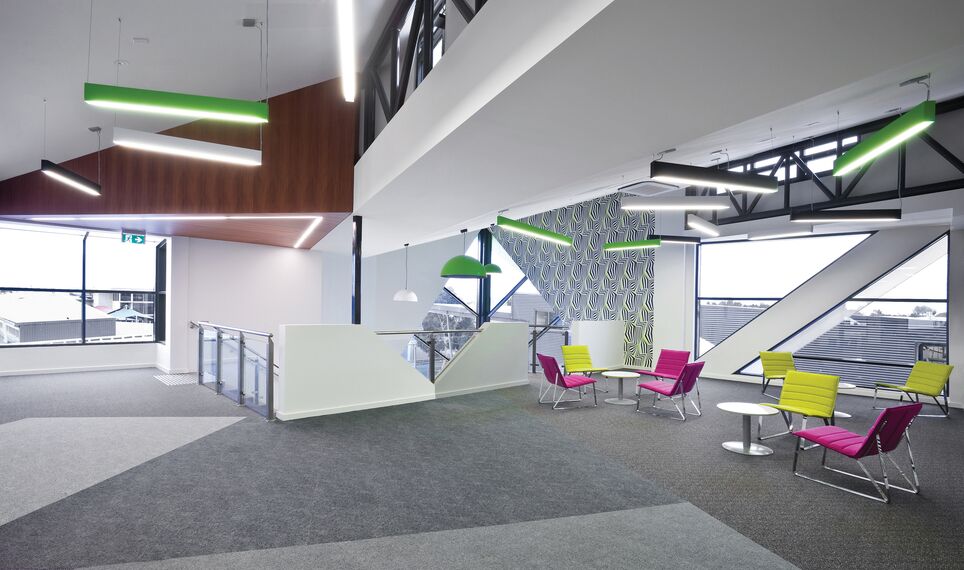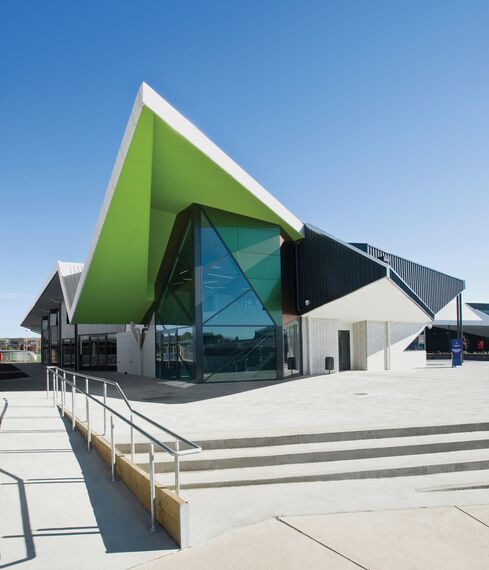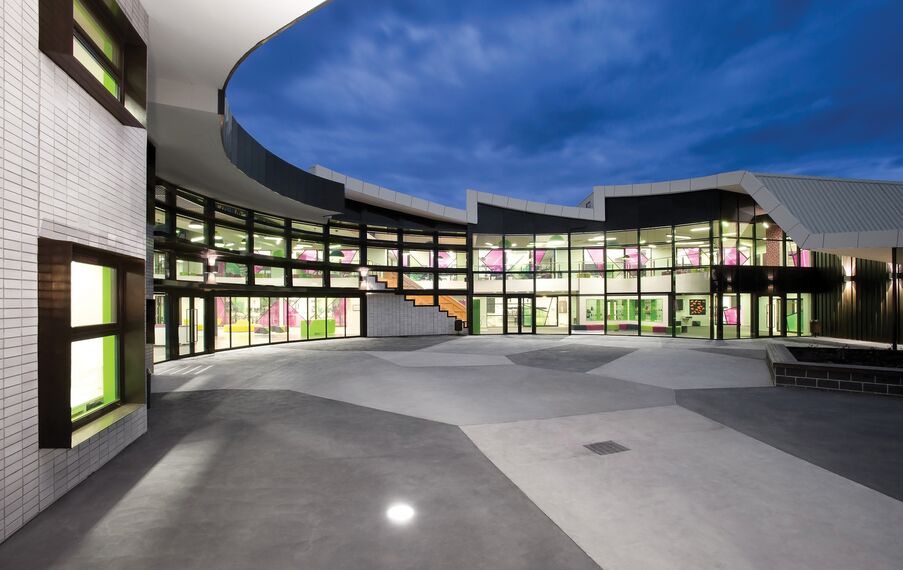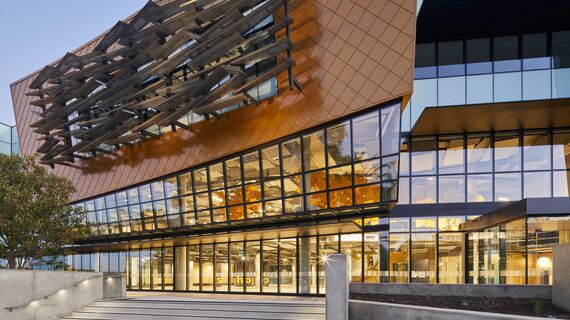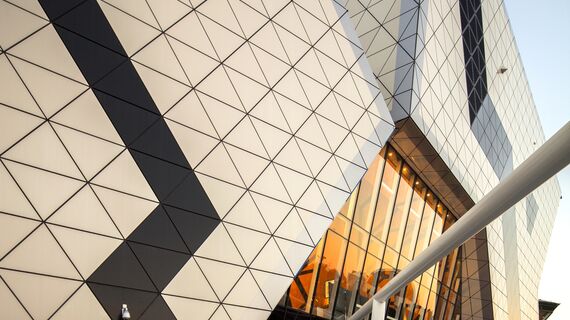Thomas Carr College Year 7 and 8 Centre
DYNAMIC ARCHITECTURE
The Year 7 and 8 center is the first of a number of projects being completed by Smith & Tracey Architects for Thomas Carr College, a Roman Catholic co-educational secondary school, as the Melbourne suburb of Tarneit expands rapidly in response to population growth and development. The dynamic architecture - moving walls between classrooms, connections to the outside - depict a non-traditional way of learning.
“This project is seen as the first building of our masterplan for the school to allow for its foreseen future growth”, explains Smith & Tracey project lead architect Stasinos Mantzis. Founded in 1997, the current school is a mix of permanent and temporary classroom buildings. The newly built Year 7 and 8 center seeks to replace some of these temporary classrooms which were required due to rapid growth in student numbers as well as envelope over and around the existing science laboratory building on the site. “Apart from meeting the functional requirements of the brief, we wanted to design a building which expressed the aspirations of the school’s future and position within this new suburb as a public building”, explains Mantzis.
Smith & Tracey has extensive experience in the educational sector and providing future-proof design solutions adaptable to evolving trends in pedagogy in Australia. This particular building incorporates the recently completed existing labs to create twenty additional flexible classrooms, large breakout areas, a demonstration kitchen, offices and student facilities. These programs are designed in a horseshoe arrangement around a sun-filled, circular outdoor gathering space.
“The building underwent an evolutionary process, testing and discarding many form-making techniques”, the architect says. Each stage of the process was documented with 3D renderings to result in a determined and functional building. What also became clear from these discussions was the need to develop a dynamic architecture that would: “Engage the students with the built environment and challenge them that there might be more independent ways of learning.”
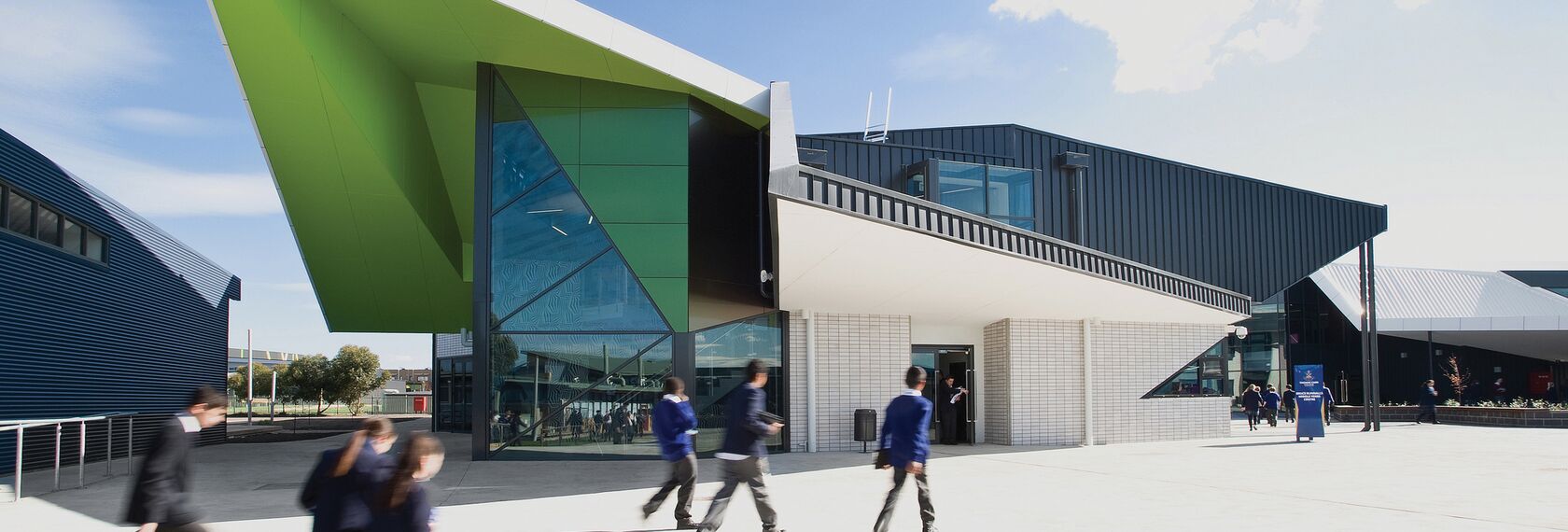
The form of the building has the language of its external folding components, sharp angles and a sawtooth roof
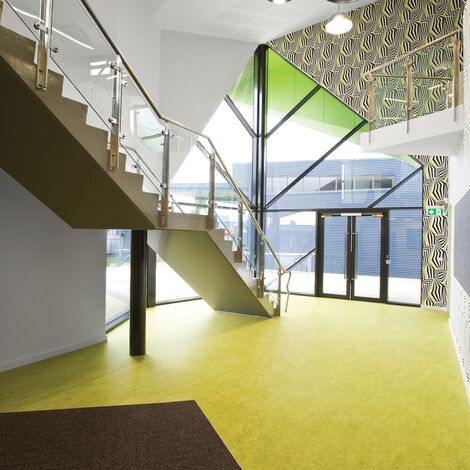
Internal patterns, shapes and colours for the circulation areas
Fluid ways
This challenge became articulated in the very form of the building with the language of its external folding components, sharp angles and saw- tooth roof and internal patterns, colours and shapes. The challenge also produced many of what have become Mantzis’ favourite aspects of the design, including the timber amphitheatre in the main breakout space. The ambition of the project was to “express the fluid way in which education and information can be accessed through non-traditional means.” This resulted in innovative ways in which the classrooms are used and connected to each other, the circulation areas and gardens outside. For example, through operable walls between classrooms the building can accommodate the teaching of small groups, and large glass sliding doors allow for individual learning areas to be opened onto the adjoining common areas and exterior courtyard. “The early involvement of students on influencing the design has been a success in engaging them with the built environment and giving them a strong sense of ownership for the building,” Mantzis explains.
In addition to the functional and desirable requirements of the brief, the architect had to take the environmental conditions into consideration. In a region susceptible to drought, the architect installed 50,000 litres of underground rainwater tanks for irrigation and toilet flushing, used highly insulated precast panels for the walls, inserted clerestory windows in all first level learning areas for cross-ventilation and natural light and chose high insulating windows with low-e glass to reduce heat transfer and increase performance.
The fabricator MSF was key to the latter and was contacted in the early stages as standard local glazing systems did not meet the required energy ratings. It took a creative approach not to compromise the design by employing systems it had not used before. Guido Nobile of MSF explains: “Issues such as incorporating different cladding were overcome in consultation with the architect. Our careful planning and experienced employees took the project as a personal challenge.” “With Reynaers’ products we could achieve the level of glazing needed to provide light, ventilation and comfort to the classrooms”, the architect adds.
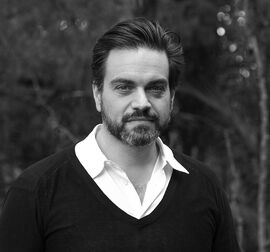
Stasinos Mantzis was born in Melbourne in 1971. He graduated from RMIT University in 1998 with a Bachelor of Architecture. As a design architect he joined Smith & Tracey in 2011 after working at a number of Melbourne practices. He has been teaching at RMIT University since 1999 as head of the design studio and master’s student thesis supervisor. Mantzis: “I have a strong narrative design approach drawing inspiration from pop cultural, art, and architecture references.”
Guido Nobile was born in 1973 in Melbourne. He started a food processing company in 1993, but in 2009 he joined his wife’s family business Morwell Shopfitters which fabricated and installed aluminium systems for commercial projects in Victoria, Australia. Nobile rebranded the company to MSF Thermal Doors & Windows in 2010 to best reflect the company’s new direction and relationship with Reynaers Aluminium. MSF now offers consulting services for high performance window systems for the Australian market. “MSF’s overriding aim is to offer architects a system that meets building energy requirements without compromising design,” he says.
Involved stakeholders
Photographer
- Chris Matterson Photography
Other stakeholder
- Brown Consulting (Engineering office)
- Total Construction Pty Ltd (Project developers)
- Total Construction (General contractors)
- Isabelle Priest (Authors)

